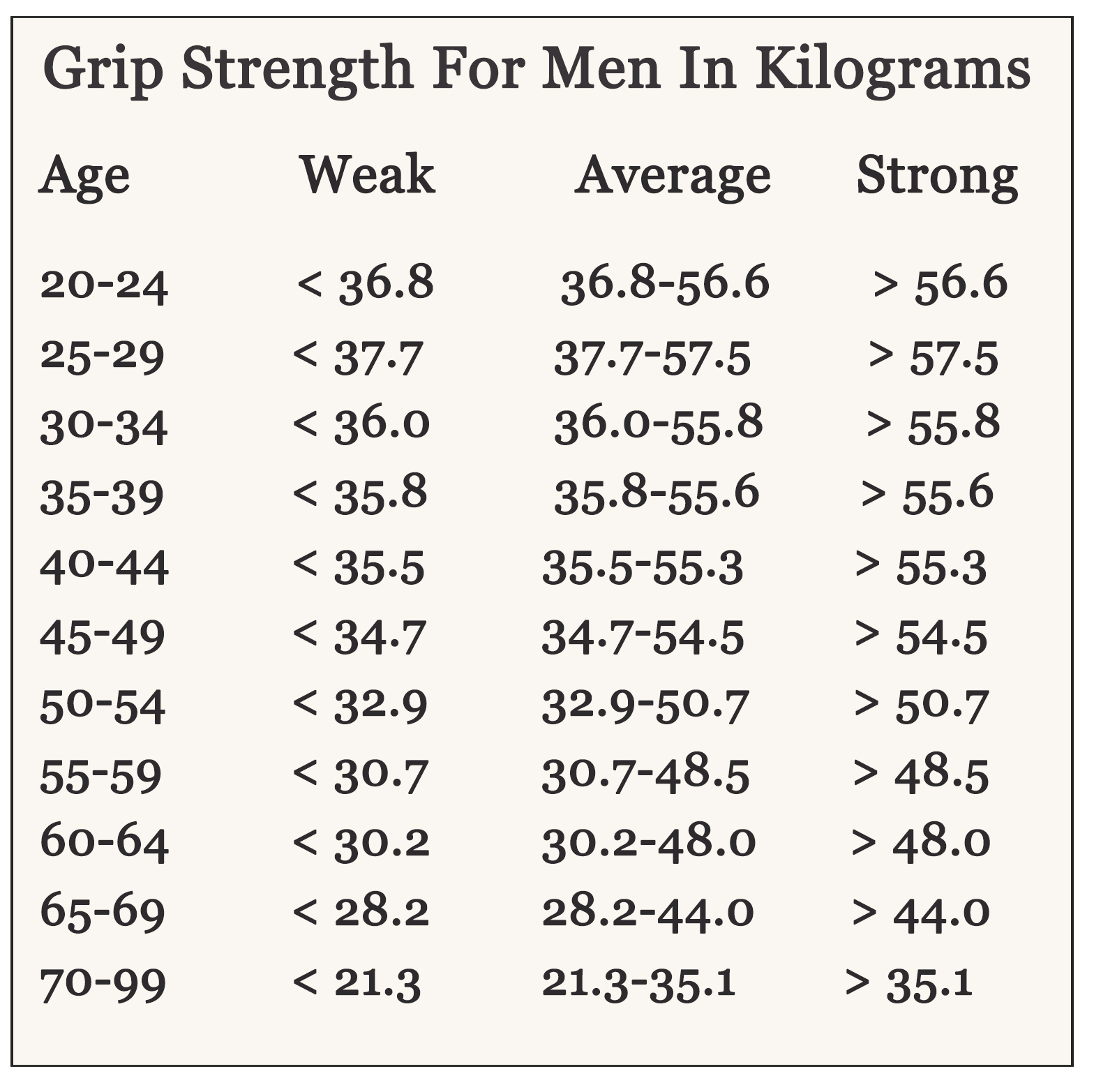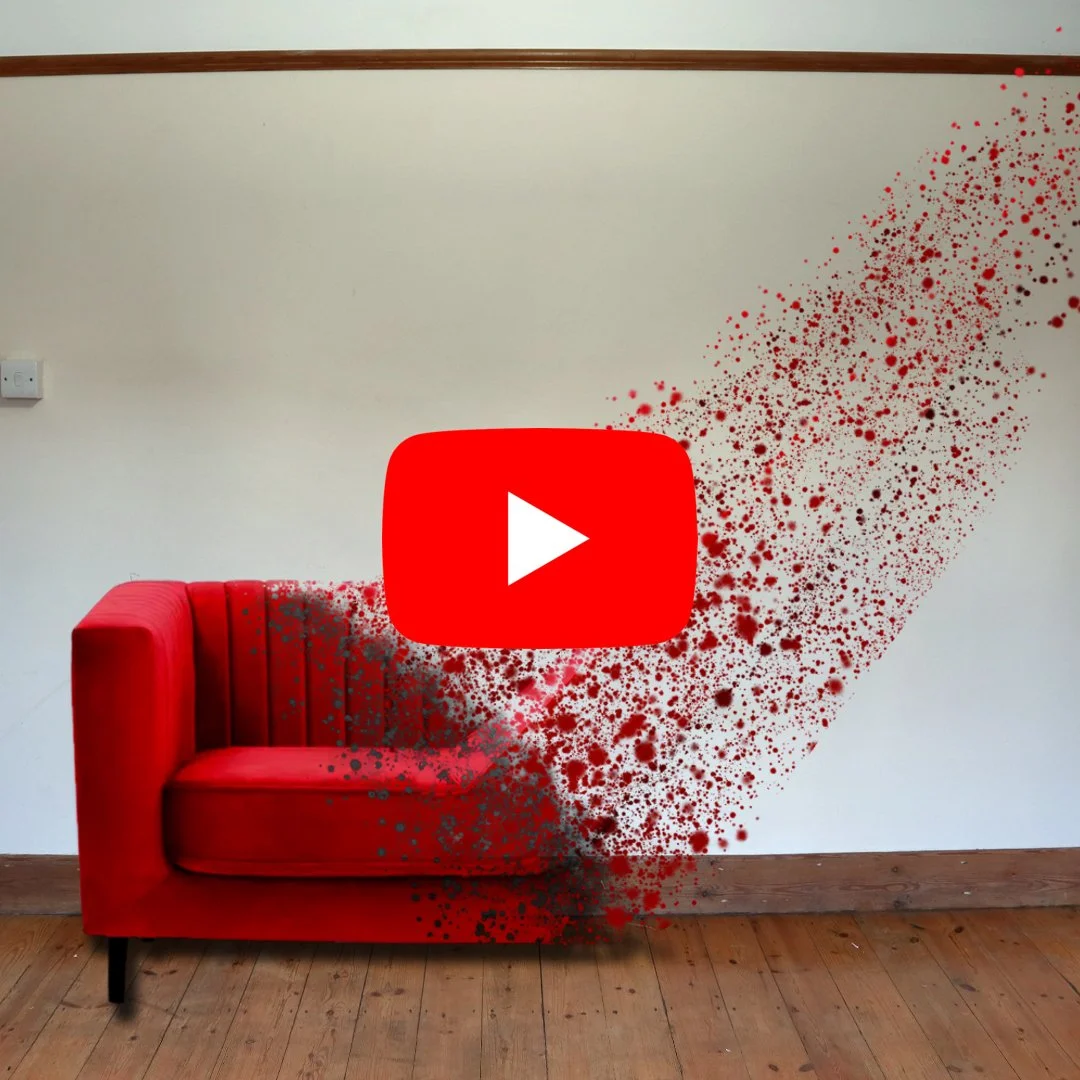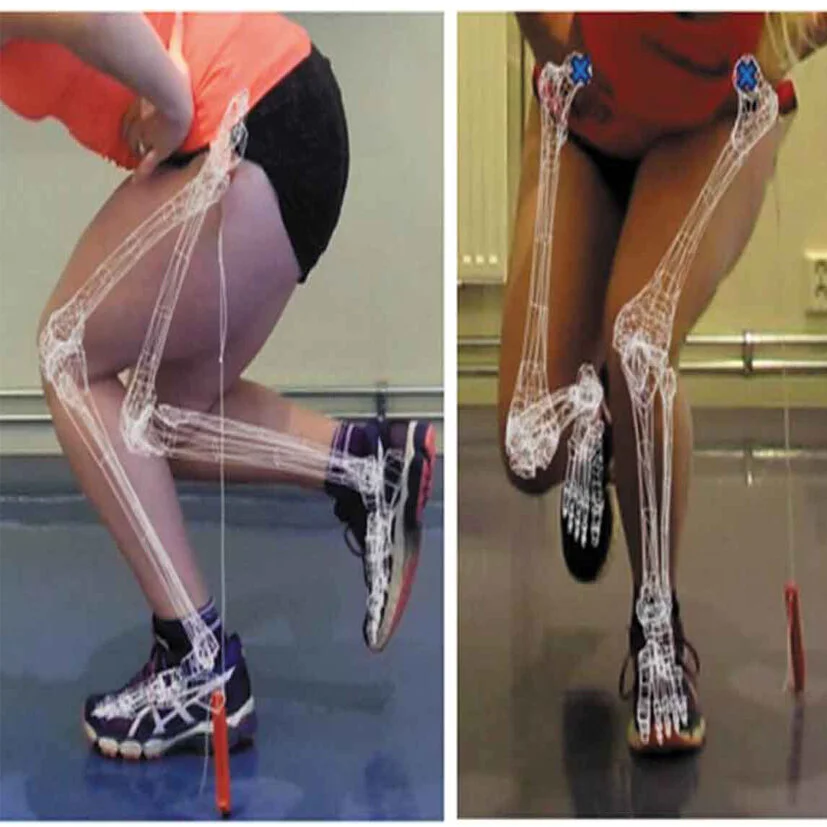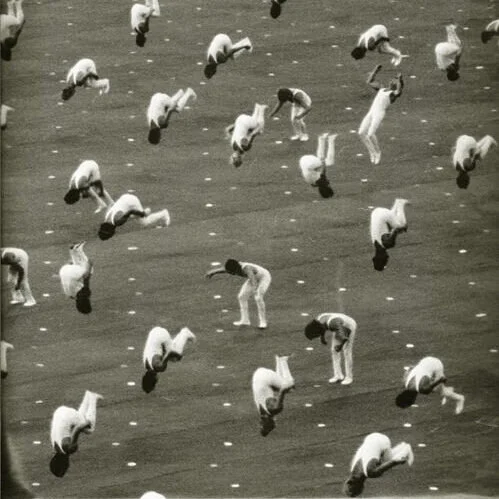Are You As Fit As You Could Be For Your Age? Find Out By Taking 4 Fitness Tests
As we lurch into the new year, most of us are keenly turning our backs on what we hope has been our generation’s annus horribilis and are hoping for better times ahead. Without wanting to talk about the only topic of conversation of 2020, among the many things that C-19 has brought into the light is the importance of personal responsibility for our own health.
Despite the King Canute-like farce of most of the World’s governments appearing to think they can take on a virus and win by condemning their populations to an array of civil rights abuses, it really is simpler and more effective for us all to ‘do our bit’ and be as healthy as we can - not for the NHS, the collective good or anyone else, but for our own quality of life.
For, despite the childlike faith in modern medicine, there are no interventions or drugs that take the place of our own preventative actions. Sure, modern medicine can mitigate the effects of a sedentary life, but we will all face the consequences of our own actions in the end. One of the earliest signs of functional decline is having difficulty with mobility - this is a warning that we need to take action and change our habits. It doesn’t mean the inevitable has arrived and that all we can do is sit back powerlessly whilst nature takes its course.
There are some tests which are simple, require only a few pieces of equipment, can be done at home and act as reliable indicators to predict our longevity, health and life expectancy. Instead of relying on a doctor to assess us when we’re already suffering, we can easily take our health into our own hands by monitoring it and taking steps to minimise problems before they appear.
It will come as no surprise that the research shows that the lower our level of physical capability, the higher our rate of mortality is. You can’t manage what you don’t measure, so the following tests are a way to gauge your physical performance - write down your results along with the date and then revisit them in 6 months time to see if your actions have resulted in improvements.
Functional Assessments
Walking Speed
Tests aerobic fitness
Equipment: A stopwatch and a clear pathway with set distance of 10 metres (add a mark at 2 and 8 metres).
Directions: Walk the set route at your normal walking speed. Start the stopwatch when you pass the 2 metre mark and stop it when you pass the 8 metre mark. This is done to take into account the acceleration and stopping time, make sure to walk the whole 10 metres each time. Do this 3 times and calculate the average of the trials.
Divide the distance travelled, 6 metres in this case, by the amount of time in seconds, this will give you your time in metres a second.
If you would like to know your speed in miles per hour, multiply your speed in metres per second by 2.237.
For example: You walked 6 metres in 4.62, 4.84 and 5.02 seconds
4.62 + 4.84 + 5.02 = 14.48
14.48 ÷ 3 = 4.83 (The average time)
6 ÷ 4.83 = 1.24
Your walking speed is 1.24 metres per second.
1.24 x 2.237
Your walking speed is 2.77 miles per hour
Walking speed is a major predictor of future health outcomes including frailty, functional dependence, mobility disability, cognitive decline, falls, hospitalisation and all-cause mortality.
Chair Stand
Tests lower body strength
Equipment: Stopwatch and a chair (with a straight back and without arm rests).
Directions: Place chair against a wall and sit in the middle of it, feet shoulder width apart, flat on the floor. Cross you arms at the wrist, hold them close to your chest and keep your back straight. From the sitting position, stand completely up, then completely back down, and repeat for 30 seconds. Count the total number of complete chair stands (up and down equals one stand).
Achieving below 8 unassisted chair stands indicates a high risk for falls and impaired mobility because an inability to perform this basic skill is a sign you won’t be able to maintain independence as you get older and will struggle with activities of daily living.
4 Stage Balance Test
Tests Static Balance
Equipment : Stopwatch
Directions: There are four different standing positions that get progressively harder to hold. If you are able to hold the position for 10 seconds without needing assistance or moving your feet, move onto the next position.
Up until aged 50 you should be able to stand on one leg for 1 minute with your eyes open or 12 seconds with your eyes closed. Between 50 and 60, you should be able to manage 30 seconds with your eyes open and 6 seconds with them closed.
If you are unable to hold the tandem stance (number 2) for more than 10 seconds you need to work on your balance, strength and coordination. The balance test is a powerful predictor of cognitive decline, dementia and your of injury from falling.
Standing from floor
tests strength, flexibility and balance
Directions: Without worrying about the speed of movement, try to sit and then to rise from the floor, using the minimum support that you believe is needed. You start with a score of 10 points and subtract points for the following:
Hand used for support: -1 point
One hand on knee or thigh: -1 point
Side of the leg used for support: -1 point
Knee used for support: -1 point
Forearm used for support: -1 point
Example: When standing up, you put your right knee on the floor and use your hand for support that’s minus 2 points. When sitting back down you put your left hand on your left knee that’s minus 1 more point. Your total score would be 7 (10-2-1=7).
Resarchers found that for every 1 point increase it is linked to a 21% decrease in mortality from all causes. People who score between 0 - 3 are more than 5 times as likely to die within the same period, compared to those who score between 8 - 10.
Grip Strength
Tests Upper body strength
Equipment: Handgrip Dynamometer
Directions: With you arm by your side, let the dynamometer rest in your palm and your fingers rest on the lever.
Squeeze the dynamometer as hard as you can for 5 seconds and keep the rest of your body still as it can influence the reading. Do this 3 times with the same hand with a 1 minute resting period between each squeeze. Take the mean value of the 3 readings to get your maximum grip strength. Repeat on the other hand.
A long term study showed that grip strength was a better predictor of cardiovascular disease than checking blood pressure. Each 5kg increment of grip strength below the average was tied to a 20% increase for women and a 16% increase for men in the risk of death from all causes and a higher risk for illness. For death from heart disease, the risk increased 19% for women and 22% for men. For death from respiratory disease, the increase was 31% for women and 24% for men, and for deaths from all cancers, the increase was 17% for women and 10% for men.
REFERENCES
Brito LBB, Ricardo DR, Araujo DSMS, et al. Ability to sit and rise from the floor as a predictor of all-cause mortality. European Journal of Cardiovascular Prevention, 2012; DOI: 10.1177/2047487312471759
Araújo CGS, Castro CLB, Franca JFC, Araújo DS. Sitting-rising test: Sex- and age-reference scores derived from 6141 adults. Eur J Prev Cardiol. 2020 May;27(8):888-890. doi: 10.1177/2047487319847004. Epub 2019 May 1. PMID: 31039614.
Ricardo, Djalma & Araujo, Claudio Gil. (2001). Sitting-rising test: influence of excess body weight in adults. Revista Brasileira de Medicina do Esporte. 7. 45-52. 10.1590/S1517-86922001000200001.
Cooper Rachel, Kuh Diana, Hardy Rebecca, Mortality Review Group . Objectively measured physical capability levels and mortality: systematic review and meta-analysis BMJ 2010; 341 :c4467
Cooper Rachel, Strand Bjørn Heine, Hardy Rebecca, Patel Kushang V, Kuh Diana. Physical capability in mid-life and survival over 13 years of follow-up: British birth cohort study BMJ 2014; 348 :g2219
Sean A. P. Clouston, Paul Brewster, Diana Kuh, Marcus Richards, Rachel Cooper, Rebecca Hardy, Marcie S. Rubin, Scott M. Hofer, The Dynamic Relationship Between Physical Function and Cognition in Longitudinal Aging Cohorts, Epidemiologic Reviews, Volume 35, Issue 1, 2013, Pages 33–50, https://doi.org/10.1093/epirev/mxs004
Roberts HC, Denison HJ, Martin HJ, Patel HP, Syddall H, Cooper C, et al. A review of the measurement of grip strength in clinical and epidemiological studies: towards a standardised approach. Age Ageing2011;40:423-9
Cooper R, Mishra GD, Kuh D. Physical activity across adulthood and physical performance in midlife: findings from a British Birth Cohort. Am J Prev Med2011;41:376-84.
Studenski S, Perera S, Patel K, Rosano C, Faulkner K, Inzitari M, et al. Gait speed and survival in older adults. JAMA2011;305:50-8
Cesari M, Kritchevsky SB, Newman AB, Simonsick EM, Harris TB, Penninx BW, et al. Added value of physical performance measures in predicting adverse health-related events: results from the Health, Aging And Body Composition Study. J Am Geriatr Soc2009;57:251-9
Bohannon RW. Test-retest reliability of the five-repetition sit-to-stand test: a systematic review of the literature involving adults. J Strength Cond Res2011;25:3205-7
Yim-Chiplis PK, Talbot LA. Defining and measuring balance in adults. Biol Res Nurs2000;1:321-31
Lee IM, Skerrett PJ. Physical activity and all-cause mortality: what is the dose-response relation? Med Sci Sports Exerc2001;33:S459-71
Hirsch CH, Buzkova P, Robbins JA, Patel KV, Newman AB. Predicting late-life disability and death by the rate of decline in physical performance measures. Age Ageing 2012;41:155-61
White DK, Neogi T, Nevitt MC, Peloquin CE, Zhu Y, Boudreau RM, et al. Trajectories of gait speed predict mortality in well-functioning older adults: the Health, Aging and Body Composition study. J Gerontol A Biol Sci Med Sci2013;68:456-64
Garcia-Pena C, Garcia-Fabela LC, Gutierrez-Robledo LM, Garcia-Gonzalez JJ, Arango-Lopera VE, Perez-Zepeda MU. Handgrip strength predicts functional decline at discharge in hospitalized male elderly: a hospital cohort study. PLoS One2013;8:e69849
Franklin, B.F., Brinks, J., Sacks, R. et al. (2015). Reduced walking speed and distance as harbingers of the approaching grim reaper. American Journal of Cardiology online, 116, 313-317
Middleton, A., Fritz, S.L., Lusardi, M. (2015). Walking speed: The functional vital sign. Journal of Aging and Physical Activity, 23(2), 314-322.
Verghese, J., Wang, C., and Holtzer, R. (2011). Relationship of clinic based gait speed measurement to limitations in community based activities in older adults, Archives of Physical Medicine and Rehabilitation, 92(5), 844-846
Bergland A, Jørgensen L, Emaus N, Strand BH. Mobility as a predictor of all-cause mortality in older men and women: 11.8 year follow-up in the Tromsø study. BMC Health Serv Res. 2017;17(1):22. Published 2017 Jan 10. doi:10.1186/s12913-016-1950-0
Hanwright PJ, Rath JL, von Guionneau N, Harris TGW, Sarhane KA, Kemp SWP, Hoke A, Cederna PS, Tuffaha SH. Stimulated grip strength measurement: Validation of a novel method for functional assessment. Muscle Nerve. 2019 Oct;60(4):437-442. doi: 10.1002/mus.26646. Epub 2019 Aug 1. PMID: 31325319
Beyer SE, Sanghvi MM, Aung N, Hosking A, Cooper JA, Paiva JM, et al. Prospective association between handgrip strength and cardiac structure and function in UK adults. PloS one. 2018;13(3):e0193124.
Savino E, Martini E, Lauretani F, Pioli G, Zagatti AM, Frondini C, et al. Handgrip strength predicts persistent walking recovery after hip fracture surgery. The American journal of medicine. 2013;126(12):1068-75.
Fritz NE, McCarthy CJ, Adamo DE. Handgrip strength as a means of monitoring progression of cognitive decline–a scoping review. Ageing research reviews. 2017;35:112-23.
Rijk JM, Roos PR, Deckx L, van den Akker M, Buntinx F. Prognostic value of handgrip strength in people aged 60 years and older: a systematic review and meta‐analysis. Geriatrics & gerontology international. 2016;16(1):5-20.
Ibrahim K, May CR, Patel HP, Baxter M, Sayer AA, Roberts HC. Implementation of grip strength measurement in medicine for older people wards as part of routine admission assessment: identifying facilitators and barriers using a theory-led intervention. BMC geriatrics. 2018; 18(1):79. doi: 10.1186/s12877-018-0768-5.
Rodacki AL, Moreira NB, Pitta A, Wolf R, Melo Filho J, Rodacki CD, Pereira G. Is Handgrip Strength a Useful Measure to Evaluate Lower Limb Strength and Functional Performance in Older Women?. Clinical Interventions in Aging. 2020;15:1045.
Lee SC, Wu LC, Chiang SL, Lu LH, Chen CY, Lin CH, Ni CH, Lin CH. Validating the Capability for Measuring Age-Related Changes in Grip-Force Strength Using a Digital Hand-Held Dynamometer in Healthy Young and Elderly Adults. BioMed Research International. 2020 Apr 21;2020.
Delbaere Kim, Close Jacqueline C T, Brodaty Henry, Sachdev Perminder, Lord Stephen R. Determinants of disparities between perceived and physiological risk of falling among elderly people: cohort study BMJ 2010; 341 :c4165
Celis-Morales Carlos A, Welsh Paul, Lyall Donald M, Steell Lewis, Petermann Fanny, Anderson Jana et al. Associations of grip strength with cardiovascular, respiratory, and cancer outcomes and all cause mortality: prospective cohort study of half a million UK Biobank participants BMJ 2018; 361 :k1651


































What are the most common misconceptions about furniture free? Well these are my top three!